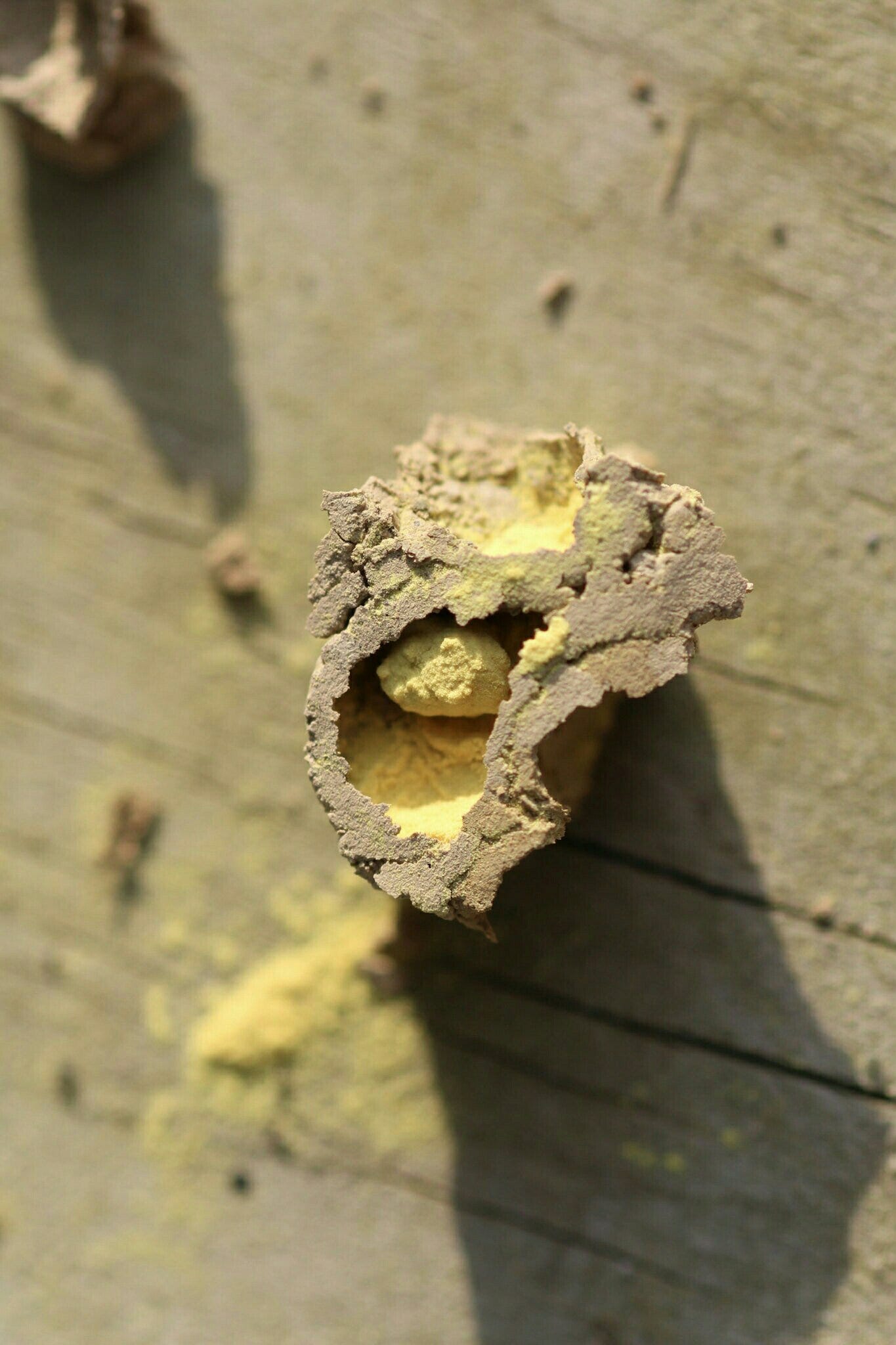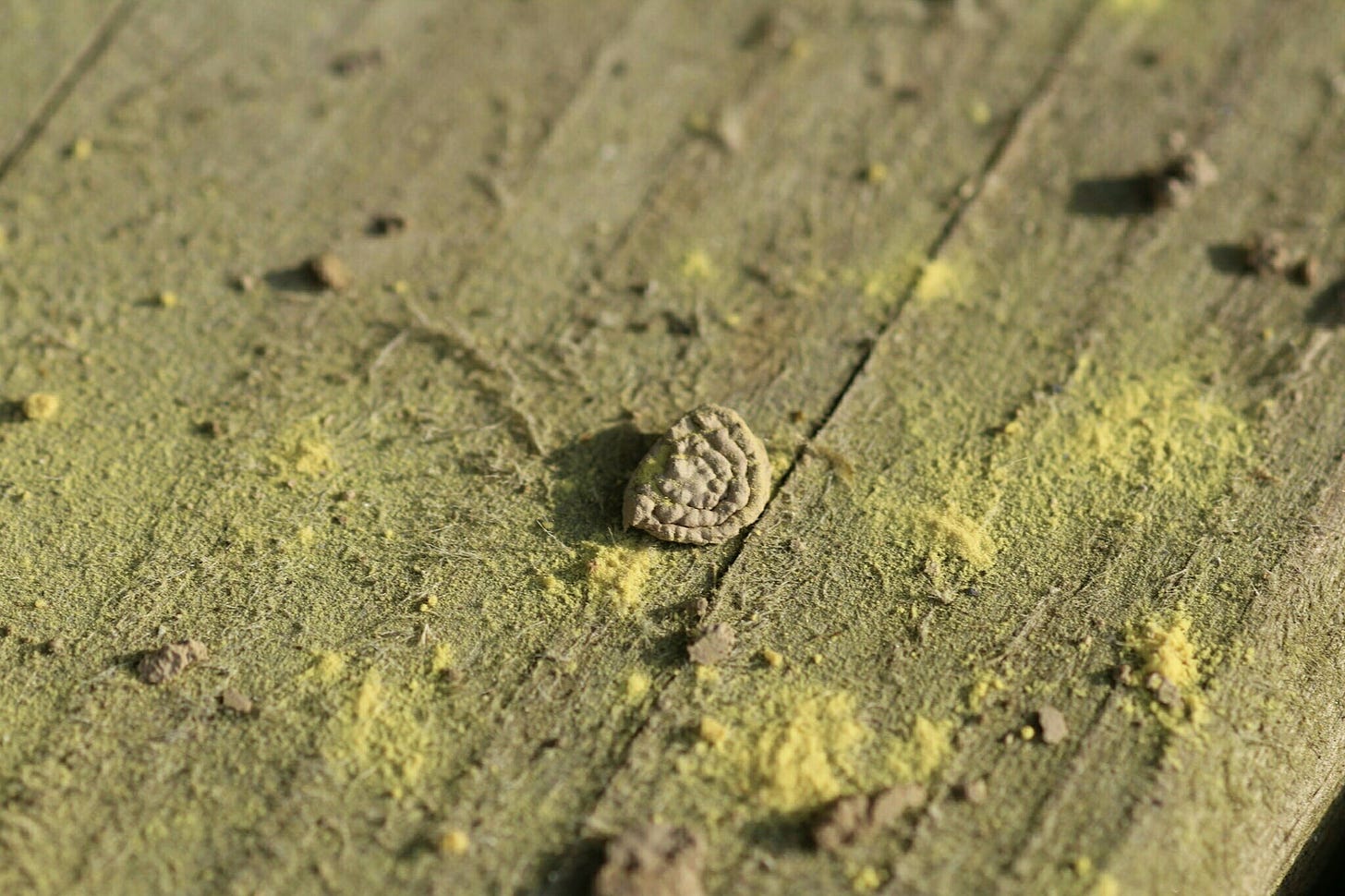Feed upon a Pollen Loaf
Last week we moved my grill and all it's accoutrements over to the new house. Previously, it had been on a covered porch, and I kept the bags of charcoal out on the porch in their paper bags, but in a tote to keep it all more-or-less tidy. All this had been loaded onto my trailer and driven the three miles to the new house, then carried to the back deck. Sometime later that evening, I was getting the grill prepped to use, and I opened a new bag of charcoal. To my surprise, when I ripped off the paper strip at the top, there was a small explosion of brilliant yellow powder.
I jumped back, and the First Reader, attracted by my consternation, came over to see what I'd reacted to. "Pollen." He commented, looking at the drift of it on the wood of the deck.
"For some reason all my brain wanted to say when I saw it was 'sulfur!'" I commented, kneeling to look closer. "Oh, it's a mason bee's nest!"
It had survived the ride, and the handling, but it hadn't made it through my opening of the bag.

You can see the loaf of pollen the tiny bee made for her baby, and the flat surface where she'd carefully adhered the mud blobs she was building a house with. What you can't see, but I'm sure was there, are the tiny eggs she'd laid on each loaf. This should have been food for the developing pollinator, and now it was scattered like microscopic confetti on my deck.

[Mason bee species are] a solitary bee that nests in pre-existing cavities, in which it builds linear series of cells separated by mud partitions. Each cell is provisioned with a pollen/nectar loaf on top of which an egg is deposited. At the end of each series of cells the female builds a thick terminal mud plug that seals the nest. One female may build as many as 7 nests (unpublished data). Like many other aculeate cavity nesters (Krombein, 1967), [mason bee] females usually lay their female eggs in the first (innermost) cells of the nest, and male eggs in the last-built cells (outermost cells). Female provisions are typically larger than male provisions, and female bees are typically larger than males.
Unlike the huge carpenter bees that look like our common conception of bumble bees (I've called them that here on the blog) the small brownish mason bees don't harm your wood on home or shed, as they merely occupy a convenient hole or crevice with their nests. They are excellent pollinators, as you can see from the amount on my deck!
Native bees, unlike the benign invader honeybees, are as vital a part in pollination as the commercial hives are. More so, since it's a rare beekeeper that can keep enough bees to satisfy the needs of all the flowers, wild and tame, in his local area. I'm sorry that this little bee wasted her effort on a spoiled brood, but I'll be more careful next time to let her babies hatch and grow undisturbed.




